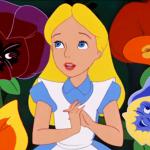The Language of the Rose
Teenagers are a little more practiced in both of these areas, but they are beginning to deal with the added complication of the reactions of others. They want to express their feelings without disrupting another's. Adults deal with this too, and though they've had a lot of practice, they still struggle with it. Sometimes the reactions of others confuse our ability to express ourselves, no matter how well we've prepared.
Whatever stage of life you're in, expression is an important part of it, and finding effective strategies can make life more meaningful and less painful.
A truly eloquent way of expression is through flowers. They say more than words, and they don't get mixed up in the delivery. Here is a brief outline of the language of roses.
Red
A red rose says I love you. A dozen red roses say it even more. Anniversaries and other special moments in a romantic relationship are appropriate opportunities to express your affection through a red rose.
Orange
Orange roses say passion, enthusiasm or fascination.
Yellow
A yellow rose has mixed feelings. It can mean platonic love, dying love, or, if you're from a German-speaking country, it can mean jealousy and infidelity.
Purple
Purple roses mean protection, such as paternal or maternal love.
Pink
A pink rose indicates grace, lesser feelings of love or, for a dark pink rose, gratitude.
White
White is the color of innocence and purity, and can be used to denote these attributes when presented as a rose. White roses can also mean secrecy, friendship, reverence and humility.
Roses can be used separately or in combinations of two or more colors to mean even more. They have their own language, and it can simplify communication. What's more, giving a rose will nearly always ensure good feelings just because roses are beautiful--even if the receiver doesn't know the language of the rose.
Emily Lyon is a client account specialist at 10x Marketing. Visit Speaking Roses today to become a more effective communicator.
More to Read:
Previous Posts:


